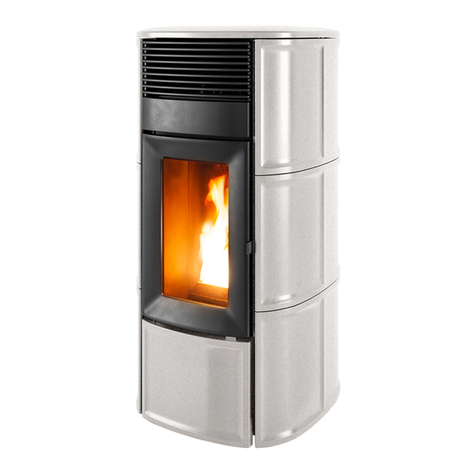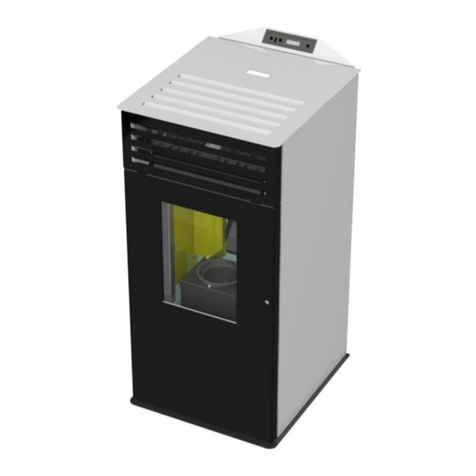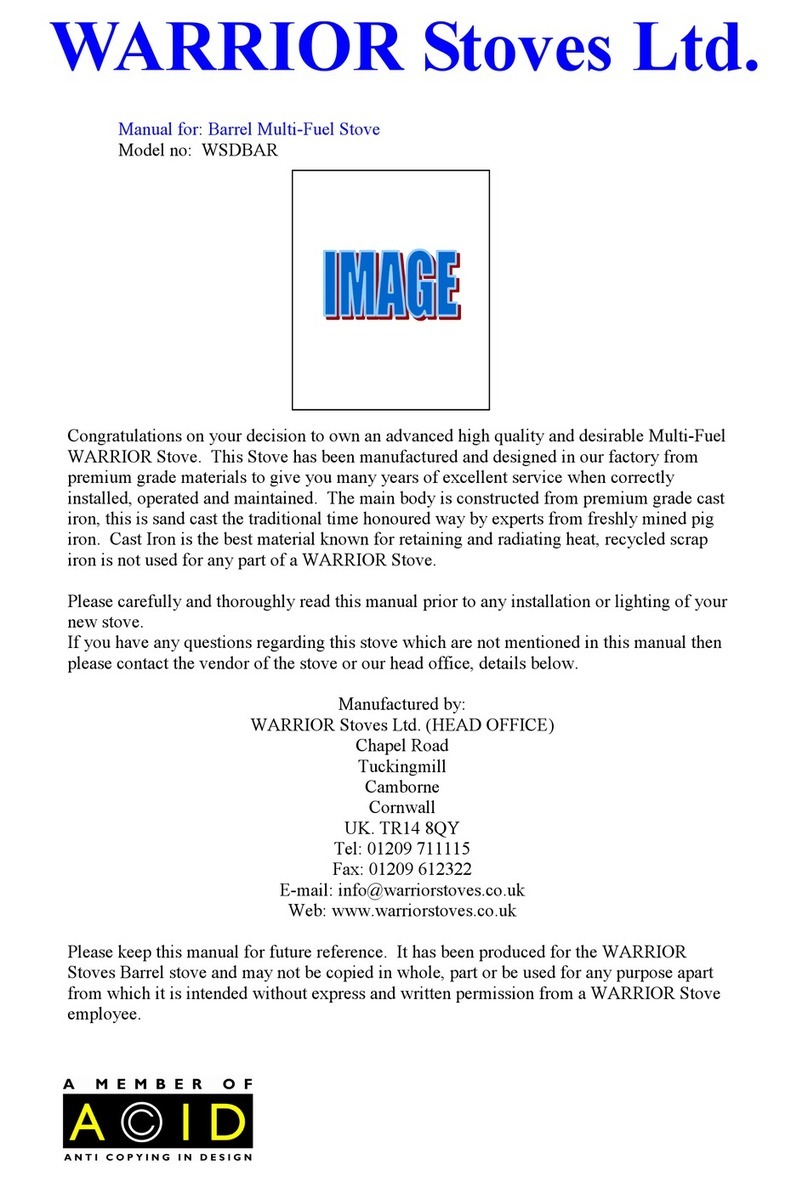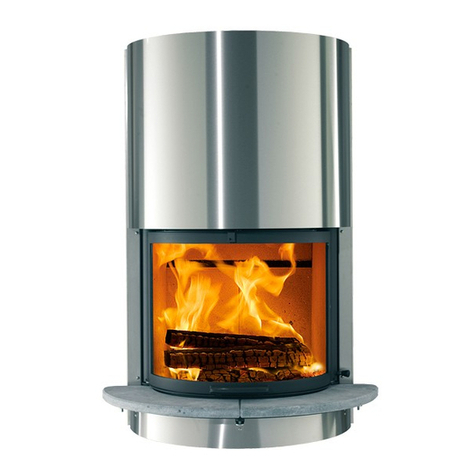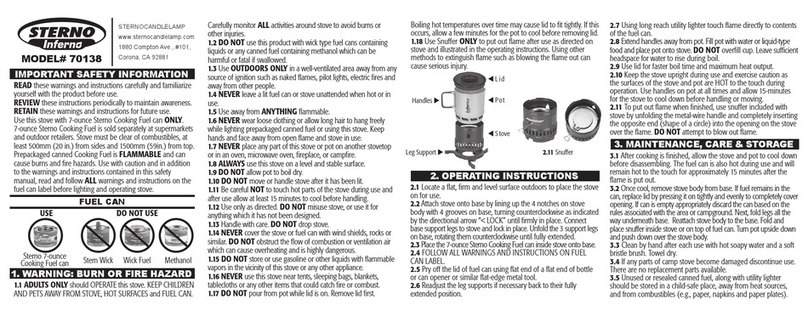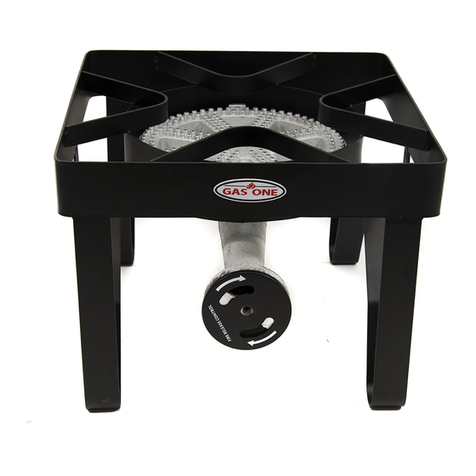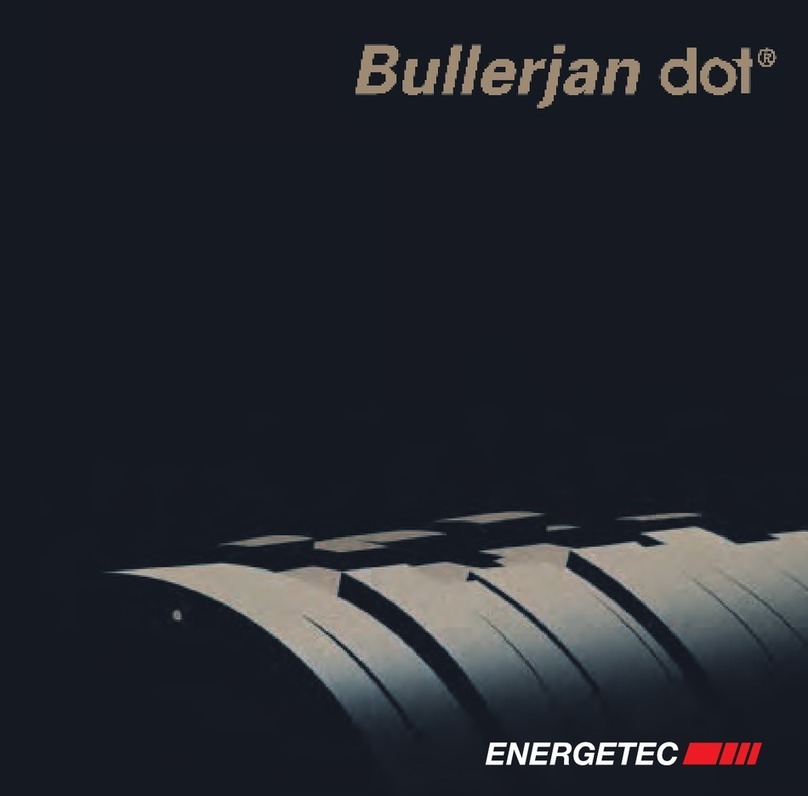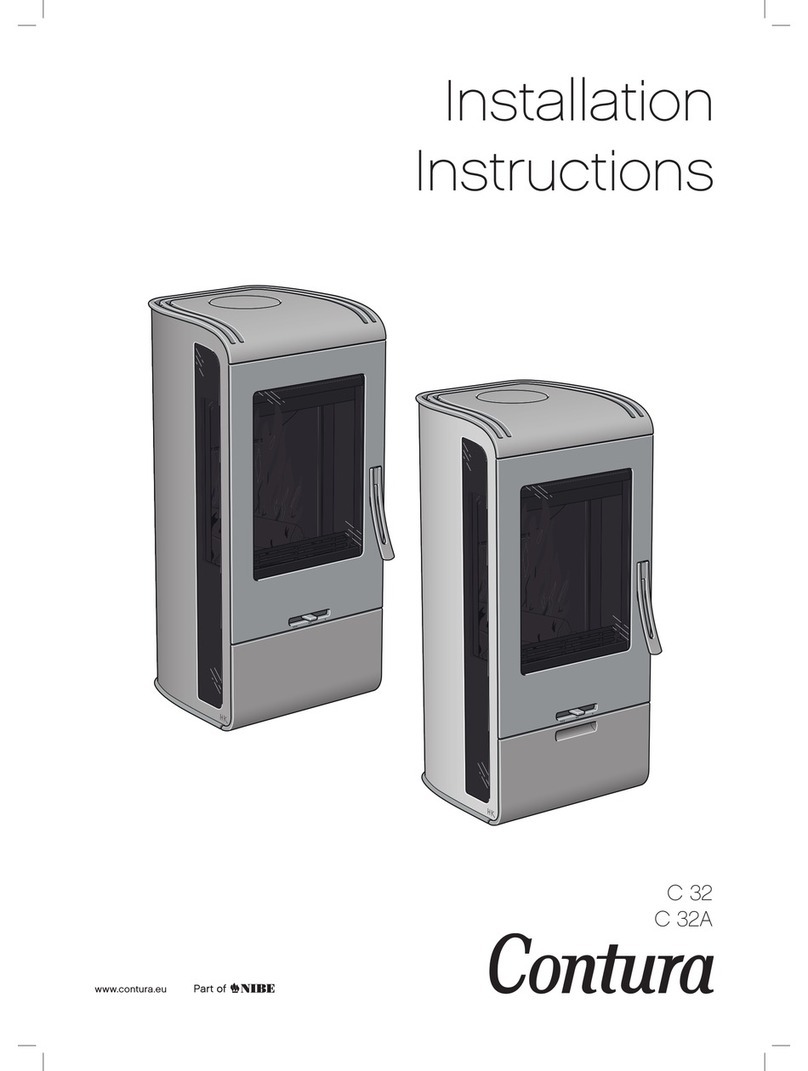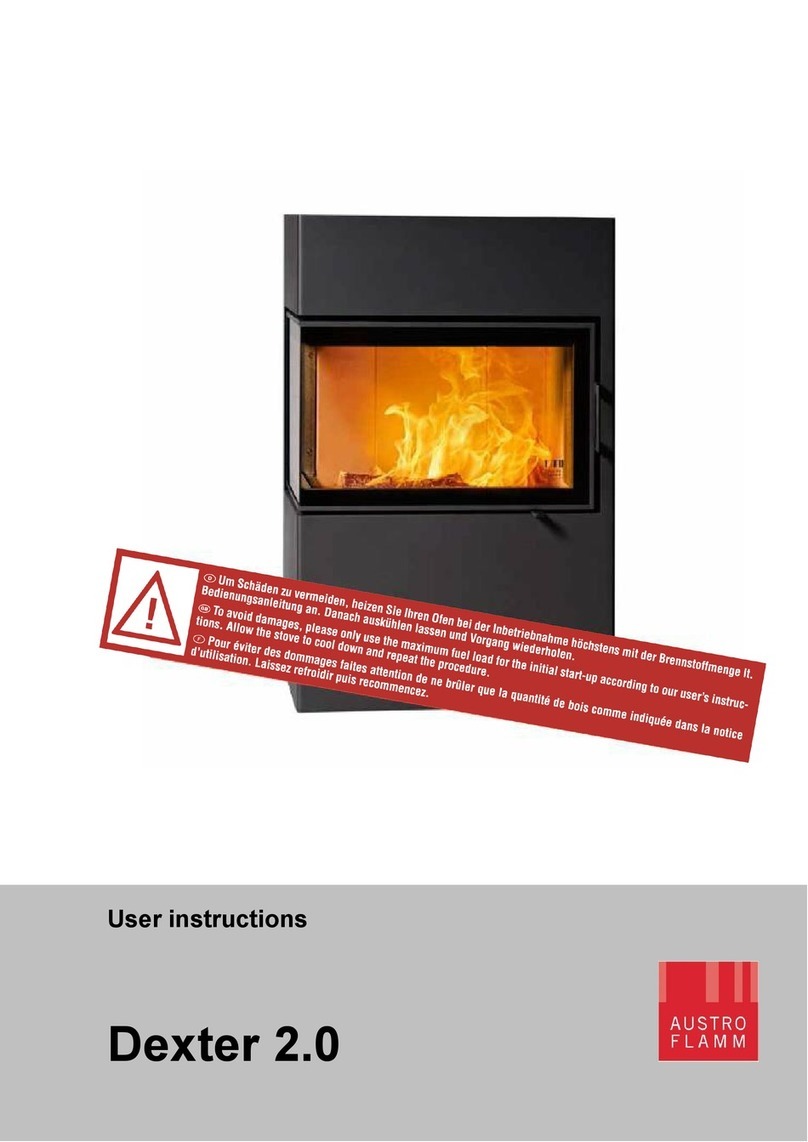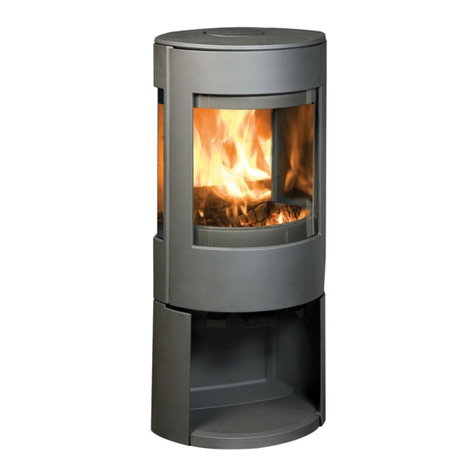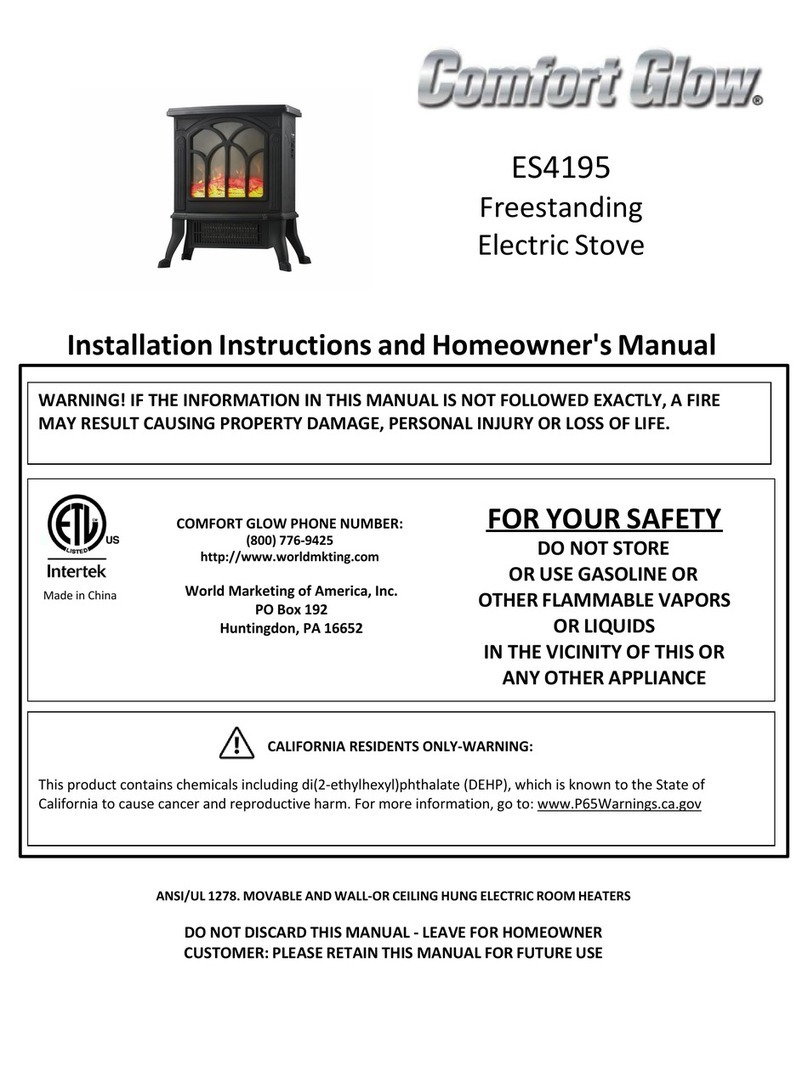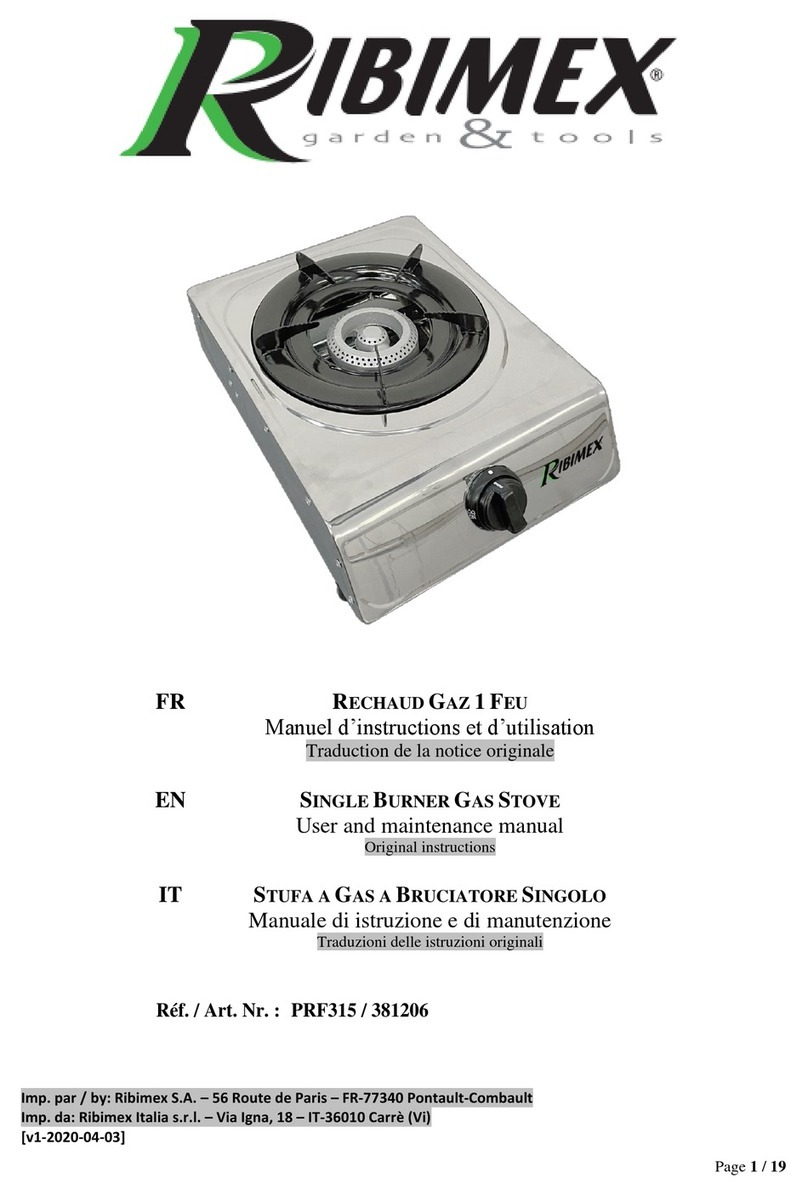GB 12
The combustion air openings and lines must not be closed or blocked unless
it has been ensured that the fireplace can only be operated with an open
lock by means of special safety equipment. The cross-section must not be
narrowed by a fastening or a grille. A shut-off valve must be installed, if
this combustion air feed pipe runs outside the building. In doing so, it must
be possible to easily determine the shut-off device setting from outside of
the connecting line. This arrangement allows the feed pipe to be insulated
to guard against the formation of condensation. The pipe should be posi-
tioned so that no water or other foreign substances from outside cannot get
into the stove, and that any condensation formed can run out of the pipe.
Even with a separate combustion air line for the stove, its operation can be
impaired by a ventilation system. Therefore, simultaneous operation is not
possible.
In accordance with regulations, combustion air lines crossing a fire wall in
buildings with more than two floors must be established in such a manner
that smoke or fire cannot be transmitted to other floors or fire compart-
ments. Country-specific and local fire safety regulations must be observed!
2.4.3 CLOSED FLUE OPERATION
The SEO S / SEO L closed flue stoves have been developed for use with
residential ventilation systems for a vacuum range of up to 8 Pa in the
installation area and can be operated without additional safety equipment.
The combustion air must be supplied in airtight lines from the outside or
via an LAS system to the device for room-air-independent operation without
fail. To do this, the combustion air duct must be permanently sealed to the
combustion air neck (connection type back or bottom) of the stove.
When connecting the close flue stove to a combustion air line, the TROL
instructions (technical rules) and DIN 18896, etc. must be observed and
applied. In particular, ensure that the dimensions are adequate! Comply
with all country-specific and local fire safety regulations! Make sure that
the pipes are always airtight.
2.5 FIRE PROTECTION
The handover inspection of your stove before commissioning is performed
by the chimney sweep responsible. You can also advise the chimney sweep
prior to installation about installation conditions on site, and can provide
advice on how to install your stove properly.
General information on fire prevention
Stoves are heat generators and are subject to regulations and necessary
measures for fire protection. Right from selection of the installation site
stage, fire regulations and recommended minimum individual clearances for
the appliance must be observed.
Basically, a minimum wall clearance of 5 cm to the back wall must be
adhered to. For reasons of safety and fire protection, make sure that large
distances to walls to be protected or combustible components are main-
tained. See the following installation examples.
The following table documents the permissible safety distances. Using the
diagrams (Figs. 4a-4f), match the mounting situation, taking into account
the specified distances that need to be complied with.
During installation, please pay attention to the fire protection instructions
and contact your local chimney sweep with any questions you may have.
• Mounting walls that are non-combustible or which do not require protec-
tion are able to withstand permanent exposure to tempera-tures > 85°C
thanks to their structure and material type.
• Combustible mounting walls in need of protection (e.g. stud partition
construction) must be protected from temperatures above 85°C.




















